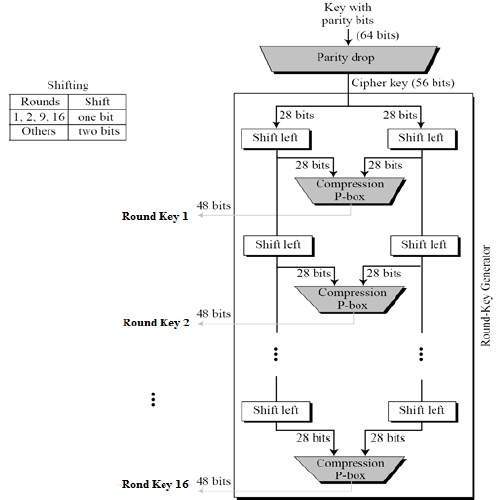Key Generation In Stream Cipher
Pseudorandom Number Generation and Stream Ciphers Keywords: Pseudo Random Numbers, A Sample Generator, Terminology, Linear-Congruential Generators, Blum Blum Shub Generator, Random & Pseudorandom Number Generators, Using Block Ciphers as PRNGs, ANSI X9.17 PRG, Natural Random Noise, Stream Ciphers, RC4, RC4 Key Schedule, RC4 Encryption, RC4. Dec 02, 2013 approximate the properties of a true random number stream as close as possible. The output of the pseudorandom number generator is conditioned on the value of the input key. Why is it not desirable to reuse a stream cipher key? If two plaintexts are encrypted with the same key using a stream cipher then cryptanalysis is often quite simple. A more practical alternative is a stream cipher We generate a pseudorandom “key stream” from a seed, a “real key” much shorter than the full “key stream” added to the message We try to make the set of possible seeds, the real keys, so large. We encrypted the encoded key stream as well as the encoded plain text in order to generate the cipher text. We then decrypted the cipher text using the encoded key stream and the decoded the deciphered text using the code tables. The highest entropy value yielded by the NSGA-II-KGA, which in turn indicates the strength of the key generated.
- Cryptography Tutorial
- Cryptography Useful Resources
- Selected Reading
The Data Encryption Standard (DES) is a symmetric-key block cipher published by the National Institute of Standards and Technology (NIST).
DES is an implementation of a Feistel Cipher. It uses 16 round Feistel structure. The block size is 64-bit. Though, key length is 64-bit, DES has an effective key length of 56 bits, since 8 of the 64 bits of the key are not used by the encryption algorithm (function as check bits only). General Structure of DES is depicted in the following illustration −
Since DES is based on the Feistel Cipher, all that is required to specify DES is −

- Round function
- Key schedule
- Any additional processing − Initial and final permutation
Initial and Final Permutation
The initial and final permutations are straight Permutation boxes (P-boxes) that are inverses of each other. They have no cryptography significance in DES. The initial and final permutations are shown as follows −
Round Function
The heart of this cipher is the DES function, f. The DES function applies a 48-bit key to the rightmost 32 bits to produce a 32-bit output.
Expansion Permutation Box − Since right input is 32-bit and round key is a 48-bit, we first need to expand right input to 48 bits. Permutation logic is graphically depicted in the following illustration −
The graphically depicted permutation logic is generally described as table in DES specification illustrated as shown −
XOR (Whitener). − After the expansion permutation, DES does XOR operation on the expanded right section and the round key. Watch dogs game key generator. The round key is used only in this operation.
Substitution Boxes. − The S-boxes carry out the real mixing (confusion). DES uses 8 S-boxes, each with a 6-bit input and a 4-bit output. Refer the following illustration −
The S-box rule is illustrated below −
There are a total of eight S-box tables. The output of all eight s-boxes is then combined in to 32 bit section.
Straight Permutation − The 32 bit output of S-boxes is then subjected to the straight permutation with rule shown in the following illustration:
Key Generation
Key Generation In Stream Ciphers
The round-key generator creates sixteen 48-bit keys out of a 56-bit cipher key. The process of key generation is depicted in the following illustration −

The logic for Parity drop, shifting, and Compression P-box is given in the DES description.
DES Analysis
Key Generation In Stream Cipher 2016
The DES satisfies both the desired properties of block cipher. These two properties make cipher very strong.
Stream Cipher Examples
Avalanche effect − A small change in plaintext results in the very great change in the ciphertext.
Completeness − Each bit of ciphertext depends on many bits of plaintext.
Key Generation In Stream Cipher Download
During the last few years, cryptanalysis have found some weaknesses in DES when key selected are weak keys. These keys shall be avoided.
Key Generation In Stream Cipher Download
DES has proved to be a very well designed block cipher. There have been no significant cryptanalytic attacks on DES other than exhaustive key search.